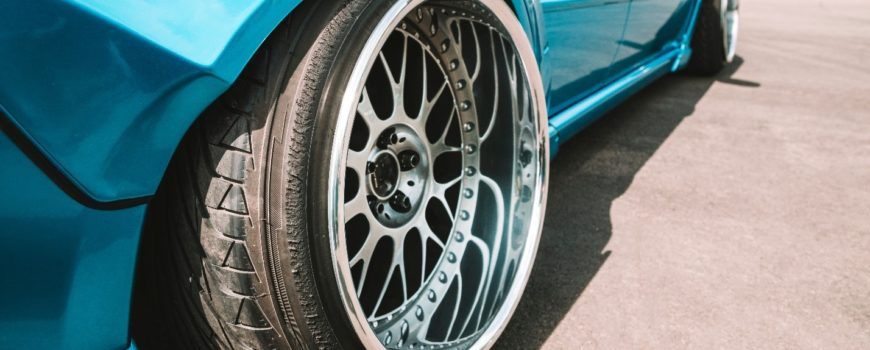What do you think of when you hear the word “backspacing”? We’re not talking about your computer keyboard. We’re talking about your car! Wheel offset and backspacing are important when it comes to measuring how your wheel mounts on your car. They impact the look and feel of your car, as well as its safety.
However, these are also two different numbers measuring very different things. Here’s what drivers need to know about backspacing and wheel offset to ensure they always find the right tires for their vehicle and that they are installed correctly.
What is Wheel Offset and How Do I Measure It?
Your wheel offset is the distance from where you mount your wheel to the wheel’s center. The centerline is the literal “center” of the width of your wheel. This centerline is also known as a 0 mm offset. That’s important to note because your wheel offset is always measured in millimeters.
When you see any offset measurements on your wheels, those are millimeters. Make sure you always have your measurements correct, or the consequences could be catastrophic!
Once you’ve found the centerline, simply take a tape measure and measure between the center and the mounting surface (where the bolts are). Anything over or under this line is called a negative offset or a positive offset. Both of these mean different things and have a different impact on your car and how it drives.
- If you’re measuring from the center and going toward the outside of the vehicle (the street side), then that’s a positive offset. This is when the wheel and tire are more flush with the outside of the car.
- If the measurement starts at the center and moves inward toward your brakes and suspension, this is a negative offset. This creates a more convex appearance that dips inward.
But what are negative offsets and positive offsets, and how do they impact your vehicle?
What is a Negative Offset for My Wheels?
A negative offset is when you mount your wheel closer to the mounting hub toward the inside of your vehicle. The negative offset makes wheels stick out more and helps to give that iconic “deep dish” look to bigger wheels.
Wide wheels and tires often require a negative offset to make more space for everything. The negative offset helps it to better fill out the wheel well while also ensuring your wheel and tire don’t get too close to your suspension.
If you’re getting a set of bigger and wider tires like mud tires, then you will likely require a negative offset to account for the added size.
What is a Positive Offset for My Wheels?
By comparison, a positive offset is when the wheel is mounted further away from the centerline (toward the street). When you purchase a new vehicle, there’s a good chance it will have a slightly positive offset.
3-Steps to Measure Wheel Offset
One more time, this is how you measure the wheel offset on your vehicle.
- Remove the wheel and accurately measure the width.
- Find the centerline of the wheel.
- Measure from the centerline to the mounting hub and record it in millimeters.
What is Backspacing, How Do I Measure It, and How Is It Different From Wheel Offset?
Now that you have a better understanding of wheel offset, it’s time to explore your backspacing. Unlike your wheel offset, backspacing is a bit more self-explanatory. It’s the space between the wheel mounting hub and the inside lip (or back) of the wheel.
3 Steps to Measure Backspacing
Measuring your backspacing is similar to your wheel offset with some key differences. Here is how you can measure it on your vehicle.
- Attach the wheel to your mounting hub.
- Using your tape measure, measure from the mounting hub to the back lip of the wheel.
- Record the number in inches.
It’s important to always make sure the backspacing on your wheels is correct. Manufacturers set a maximum requirement so that your wheel doesn’t get too close to your brakes or suspension.
Be sure that whatever new wheels or tires you buy will work with your vehicle. If you’re not sure whether or not your wheels will fit, it may be time to ask the experts!
Trust the Experts at Tread Connection for Offset, Backspacing, and Installation
Now that you know more about wheel offset and backspacing, you should be able to make a more informed decision on your next set of tires. However, you may not want to deal with taking these measurements yourself. With such exact measurements, even being off by a few millimeters can have a profound impact on your vehicle.
The TIA-certified tire experts at Tread Connection have the knowledge and skills to provide the accurate tire services you need. And thanks to Tread Connection’s convenient and efficient mobile tire service, you can have your tires mounted and installed from the safety and comfort of your home or office.
Contact a Tread Connection van in your area to get the perfect set of tires for your vehicle today!

